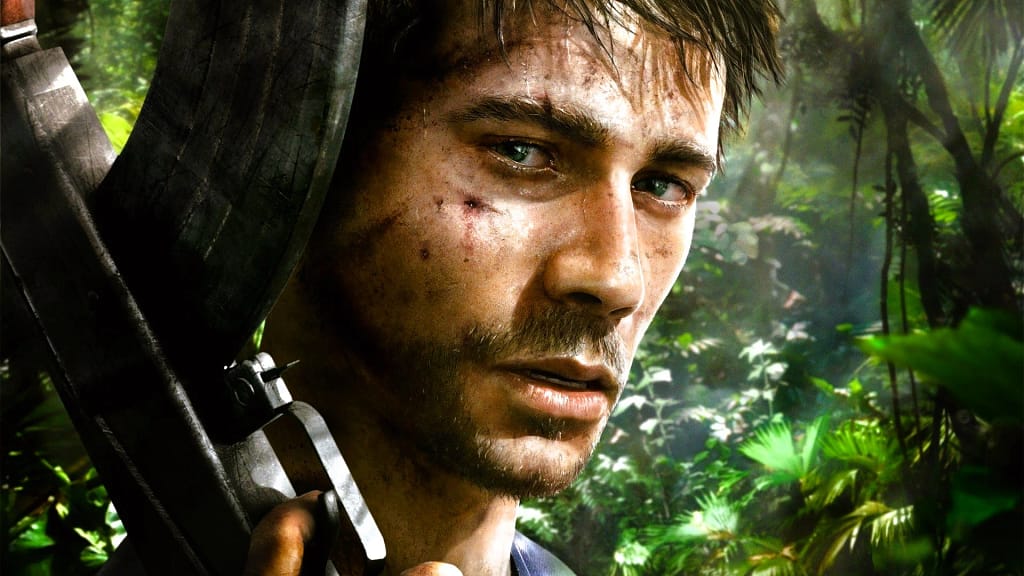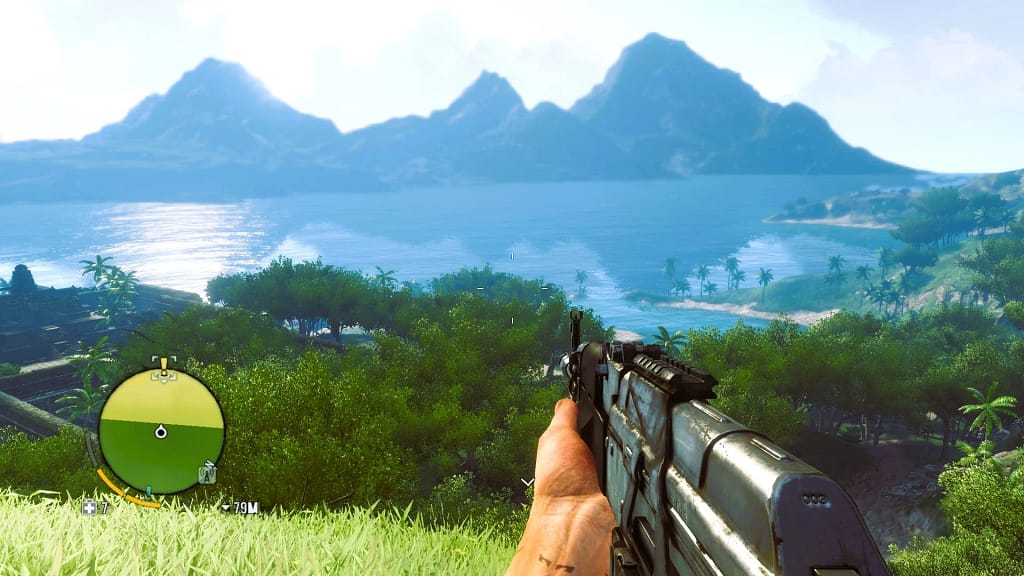Welcome To MovieAnimeX ! There are games you finish and forget.
Then there are games like Far Cry 3—the kind that grabs you by the throat, burns itself into your mind, and years later, still lingers like the final line of a great novel.
Released in 2012, Far Cry 3 dropped into a market saturated with shooters and open-world clones. But it wasn’t just another checkbox sandbox. It was raw, violent, philosophical, and beautifully twisted. Over a decade has passed, and yet when you hear the words “Did I ever tell you what the definition of insanity is?”, you don’t just remember Vaas—you feel him.
That’s what makes Far Cry 3 timeless. It wasn’t just a game. It was a reflection of who we are when the mask of civilization falls off.

Table of Contents
The Monster in the Mirror: Vaas Montenegro

Let’s not pretend. Far Cry 3 wouldn’t be Far Cry 3 without Vaas.
Michael Mando’s portrayal of the sadistic, unhinged pirate lord wasn’t just “good voice acting”—it was electric. Every scene with Vaas felt like dancing with a snake. His eyes darting, his voice cracking between charm and rage, his unpredictability turning every word into a threat laced with poetry.
Vaas wasn’t the kind of villain you defeat. He was the kind that lives inside you, waiting.
And here’s the truth: Vaas scared us because, in many ways, he understood us. His famous “insanity” monologue wasn’t just a meme-worthy line—it was a thesis on human behavior. On repetition, addiction, violence. It was a man who had already lost everything, including himself, telling you what comes next when you do the same.
In a genre flooded with forgettable bad guys, Vaas stood as a mirror. And what we saw was uncomfortable.
Jason Brody: The Anti-Hero You Didn’t Expect

The beauty of Far Cry 3 lies in how it makes you confront your role in its chaos. Jason Brody starts as a spoiled, rich thrill-seeker on vacation—exactly the kind of person you wouldn’t trust to lead anything, let alone a revolution.
But as the bodies pile up and the island seeps into his skin, Jason changes. You don’t become the hero. You become something far more terrifying: someone who likes the killing. Someone who needs it.
There’s a brilliant irony in how Far Cry 3 rewards you for your descent. You level up by murdering. You become “stronger” by crafting from the animals you slaughter. You liberate outposts like a god of war, not peace.
And all the while, the game whispers the question: Is this who you’ve always been? Or is this what you’ve become?
Jason doesn’t rise—he falls. And the deeper you go with him, the harder it is to claim innocence.
The Island Isn’t a Setting—It’s a Character

Tropical paradise? On the surface, sure. The Rook Islands are drenched in golden sunlight, crystal waters, and postcard-perfect views. But under that beauty is a pulsing, violent heartbeat. These islands bleed.
Every jungle trail hides danger. Every ruin has a history. Every pirate you sneak past or brutally takedown feels like another page in a story that never stops reminding you—you don’t belong here.
The duality of beauty and brutality is what makes the environment unforgettable. One moment you’re hang-gliding over a waterfall, the next you’re skinning a Komodo dragon after a bloody knife fight. It’s not escapism—it’s immersion. And it forces you to exist in a world where peace and savagery hold hands.
Even now, in an age of ray tracing and 4K ultra everything, Far Cry 3’s world holds up—not because of its graphics, but because it was alive.
Gameplay That Cut Deeper Than Bullets
Let’s be honest—Far Cry 3’s gameplay wasn’t just fun, it was addictive.
There was something intensely satisfying about scouting an outpost from a hilltop, tagging every enemy, setting a tiger loose from its cage, and watching the chaos unfold like a domino line of destruction. No two encounters were the same, and no solution was wrong. It respected your creativity and punished your arrogance.
Crafting your gear, hunting animals, upgrading weapons—it all fed into a loop of risk and reward. But the genius was how that loop tied into the story.
Killing wasn’t just a mechanic. It was a narrative device.
You weren’t just getting better at the game—you were getting better at becoming a killer. The power fantasy was real, but it wasn’t mindless. It had teeth. It left a taste in your mouth.
And when the dust settled, you had to ask yourself—why did that feel so good?
Moments That Made You Feel Something
Games rarely make you feel like you’re there. They either try too hard or don’t try at all.
But Far Cry 3? It nailed the art of presence.
There’s a mission where you burn a drug field with a flamethrower while Skrillex blares in the background. It should be ridiculous. But it’s so perfectly over-the-top that it becomes iconic.
Then there are the darker, quieter moments. The guilt of saving one friend over another. The hallucination sequences that blur reality. The final choice that questions your entire journey.
It wasn’t just gunplay and explosions. Far Cry 3 slowed down when it needed to. It let you sit with the consequences. It trusted you to feel something—and that trust paid off.
The Ending That Punched You in the Soul
Few endings have sparked debate like Far Cry 3’s. Whether you chose to save your friends or slit their throats and stay on the island with Citra, neither option felt clean. Neither felt heroic.
Because that’s the point.
The game doesn’t hand you a victory. It forces you to own your path.
You can walk away, broken and bloodied, clinging to a life that will never feel normal again. Or you can embrace the monster and let go of everything you once were.
Both are tragic. Both are true.
Legacy: Why It Still Matters in 2025

In a gaming world chasing bigger maps, shinier visuals, and bloated systems, Far Cry 3 stands tall because it was focused. Honest. Unafraid.
It gave us:
- A villain who became myth.
- A protagonist who wasn’t a savior, but a reflection.
- A world that invited exploration and demanded respect.
- And a story that dared to ask, What if you’re not the hero you think you are?
Every Far Cry since has tried to capture that magic. And while some came close (Far Cry 4’s Pagan Min was brilliant in his own right), none have surpassed the raw, unfiltered impact of Far Cry 3.
Because Far Cry 3 wasn’t built to please everyone. It was built to challenge you.
And that’s why we still talk about it. That’s why we return.
Final Word: Insanity Is Repeating History, and We Keep Coming Back

They say the definition of insanity is doing the same thing over and over, expecting different results.
But maybe the real insanity is thinking we ever left that island.
Far Cry 3 changed the way we saw video games. It blurred the line between fun and disturbing, between heroism and madness. It made us feel powerful—and then made us question why we wanted that power in the first place.
That’s not just good game design. That’s storytelling at its most dangerous and most beautiful.
And in 2025, it still holds up—because it never let go.